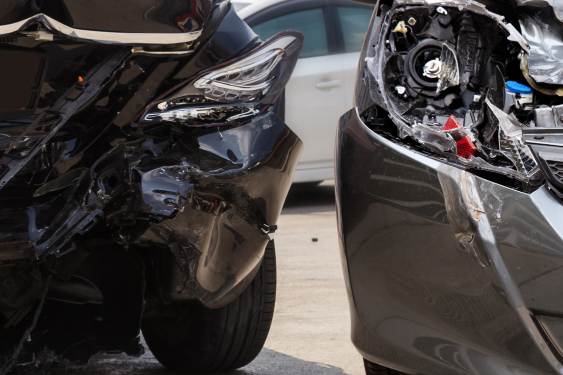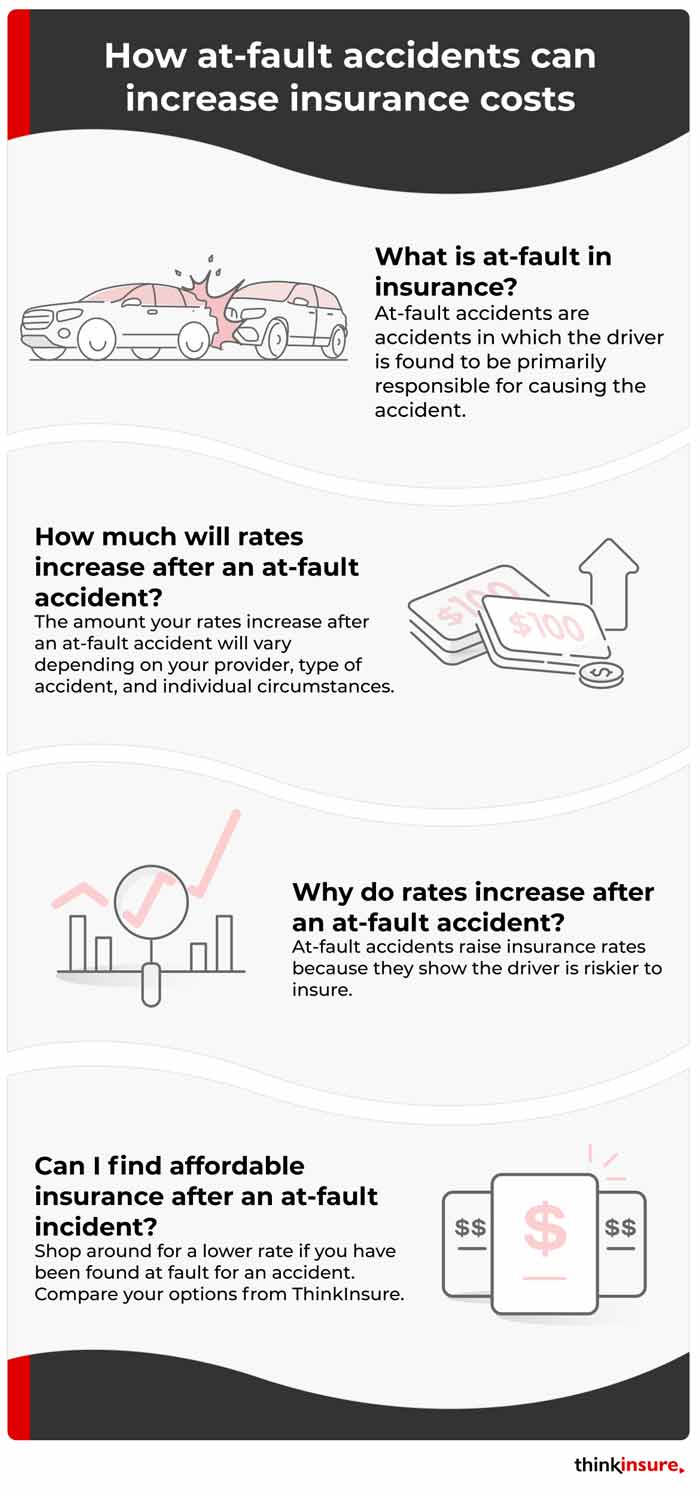
Written by Kayla Jane Barrie Updated on Oct 30, 2025 5 mins read

One of the first things that comes to mind when you cause an accident is how it will impact your insurance. Your insurer will cover you if you are at-fault for an accident (you may not be covered if you commit a crime related to the collision).
Insurers will cover the cost of repairs and medical treatments. However, you must pay your deductible. And unfortunately, your rates may increase. Read on to learn more about how at-fault accidents can increase your car insurance.
If you are found to be at fault for an accident, you can expect your insurance rates to increase. The extent of the increase depends on various factors such as:
An at-fault accident can impact your insurance rates for up to six years. The claim will be on your record during this time, and providers will adjust your costs accordingly. Here are some examples:
Fault determination rules were created to help insurance companies, police, and others determine who is at-fault and how much fault they share. Your insurer determines who is at-fault. To do this, they use the Fault Determination Rules created under the Insurance Act to investigate the accident and assign it. Who is at-fault for an accident is only sometimes clear initially. Many factors go into fault determination, such as who was involved, where they were driving, speed, and road conditions.

Fault determination rules cover many different accident types and driving situations:
Under the Ontario Fault Determination Rules, they explain, that after you report an accident, the company will investigate the circumstances and then make a decision based on the accident fault determination rules in Ontario.
2. (1) An insurer shall determine the degree of fault of its insured for loss or damage arising directly or indirectly from the use or operation of an automobile in accordance with these rules.
Here are some considerations that insurers will explore to determine fault:
Want to learn more about the fault determination rules? Visit the Service Ontario website.
Contrary to popular belief, the police do not impact insurers' decision to assign fault. If you are charged with a traffic offence as part of your accident, you will not necessarily be deemed to be at-fault. On the other hand, if the police decide not to file charges, you can still be responsible for the crash.
FSCO provides a good example :
For example, if a vehicle could not stop on an icy road and rear-ended another, a police officer may say that neither of the drivers was at-fault. Such a comment relates to the laying of charges and should not be taken as an opinion about how the fault determination rules apply to an auto insurance claim. In a case like this, the insurer would apply the rule stating that a vehicle that rear-ends another is at-fault.
Driving without insurance in Ontario has serious repercussions. If you cause an accident and do not have insurance, you will be held personally responsible for any repairs to your vehicle. You will also have to cover your medical bills. You will be fined and could face charges depending on the circumstances.
One at-fault accident usually won't derail your car insurance, especially if you're older and can add an accident forgiveness endorsement. However, two or more accidents will likely label you high-risk. Always talk to your broker before submitting a claim to understand the potential impact on your premiums.
If you are at fault in an accident, your Ontario car insurance could increase. However, you may only see an increase if you are at least 25% at fault.
Your insurance is unlikely to increase if you are in a non-fault accident and not at fault for the crash. It's a common misconception that filing a claim will automatically result in a rate change.
Your actual coverage will remain unchanged - you will still have the same protections and limits in place. But your premiums will increase if you are at-fault. Your classification could also change to high risk, resulting in more expensive payments for coverage.
Even if you are at fault, searching around when your policy is up for renewal is recommended. This will increase your chances of finding the most affordable car insurance for your needs.
| Categories | Auto |
|---|---|
| Tags | Auto Coverage |
Read our insurance blog to get helpful tips, information and news.
Has your car been totalled in an accident? Is your car a write off? Learn about vehicle write offs for a total loss insurance claim.
Get the facts on Toronto's auto theft problem. We break down the data, reveal the most-stolen vehicles (including the Honda CR-V and Lexus RX 350), and show which neighbourhoods are most affected.
Dive into the world of auto theft with our blog on the most stolen cars in Canada. See the most stolen cars across Canada, including provincial lists for Ontario and Quebec, and learn how high-risk models can affect your car insurance premiums.
Drive safe this winter! Check out these tips for driving in snowy and icy conditions in Ontario. Get other helpful info and FAQs on winter driving.